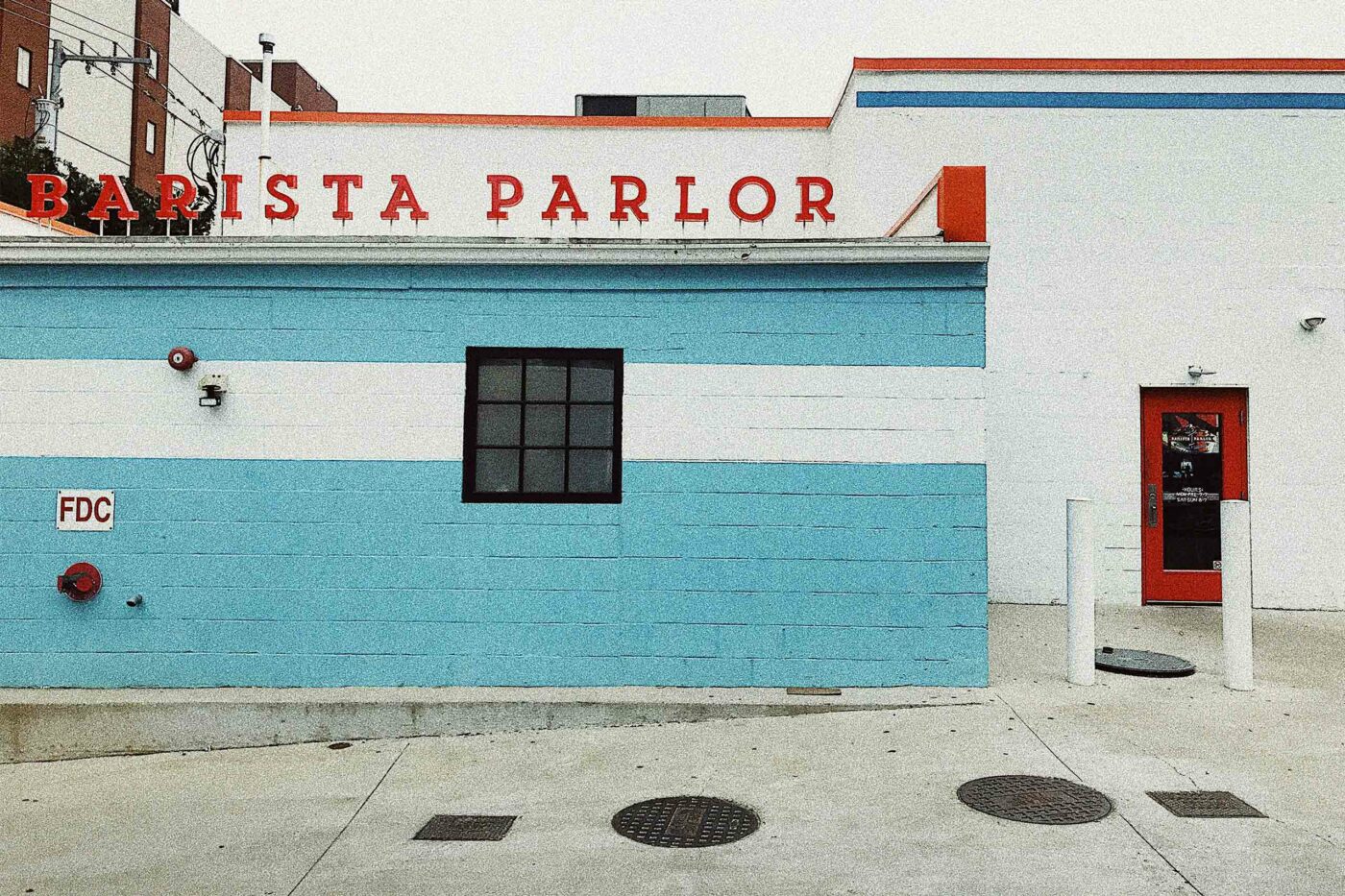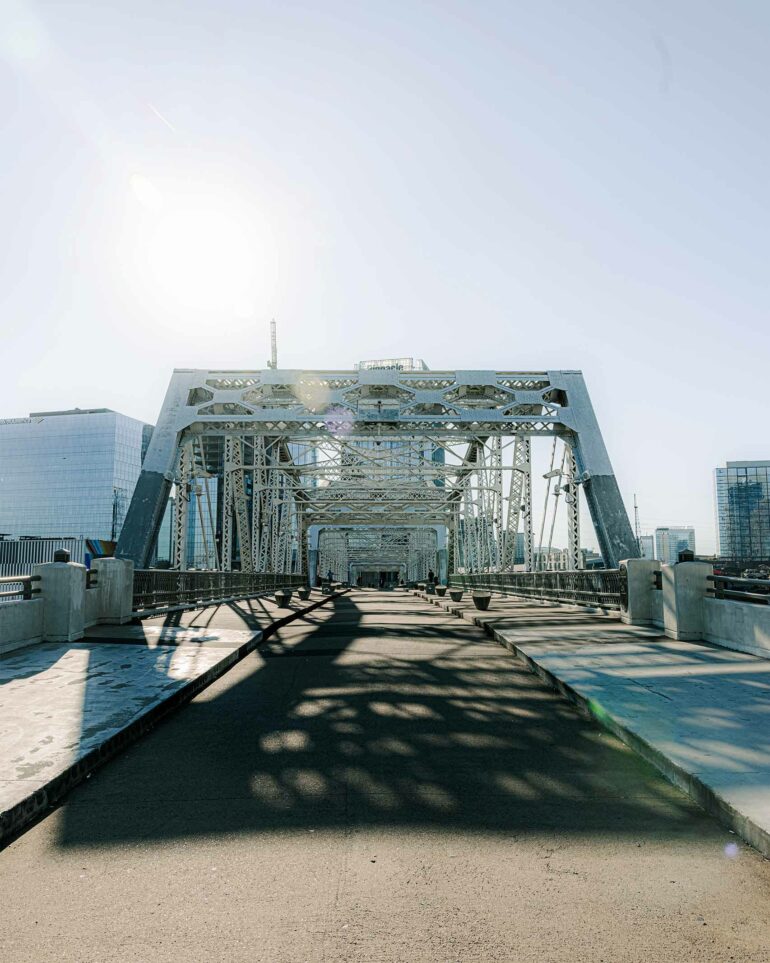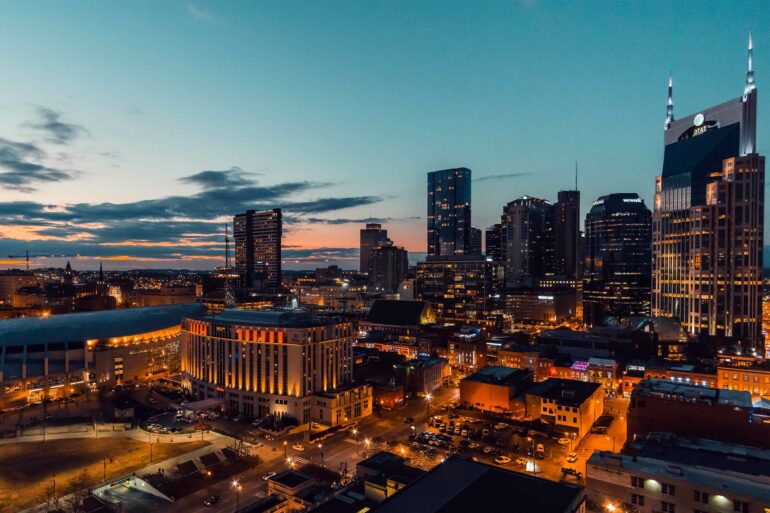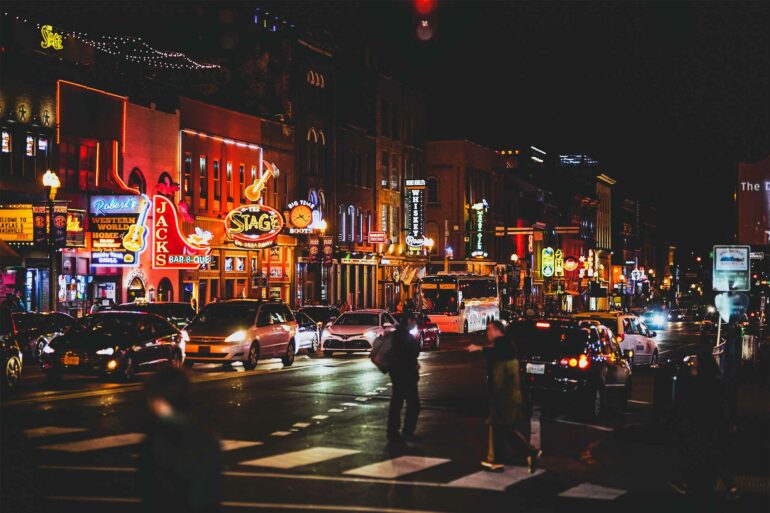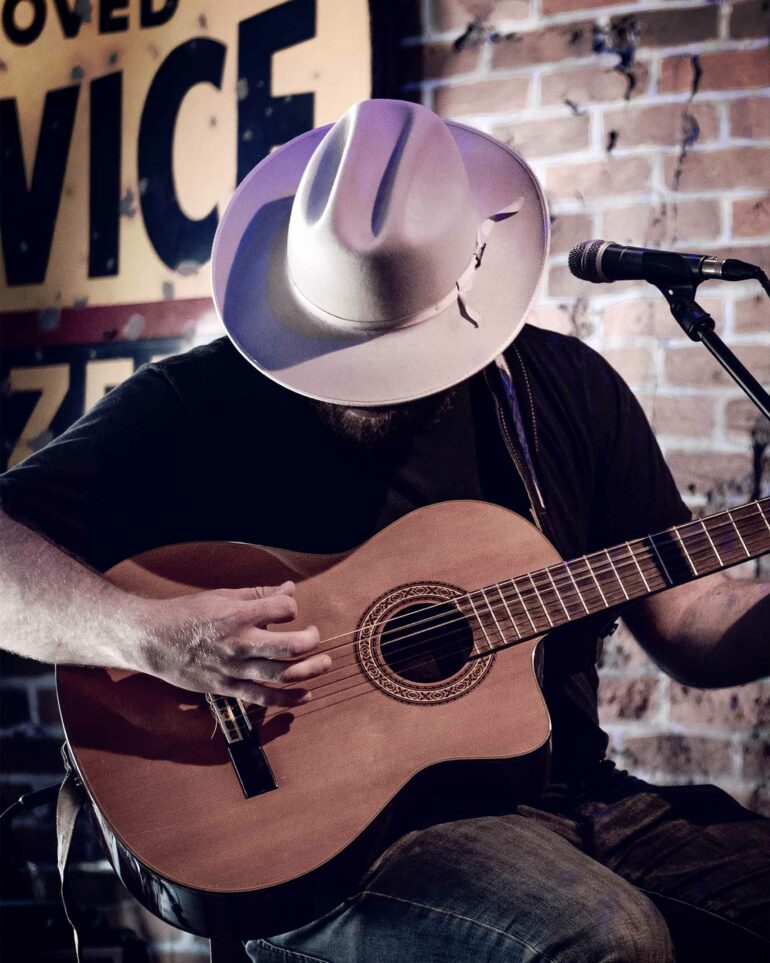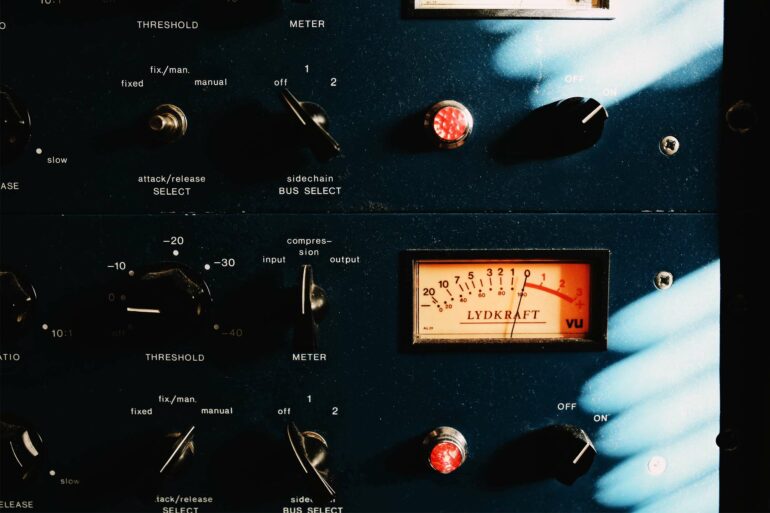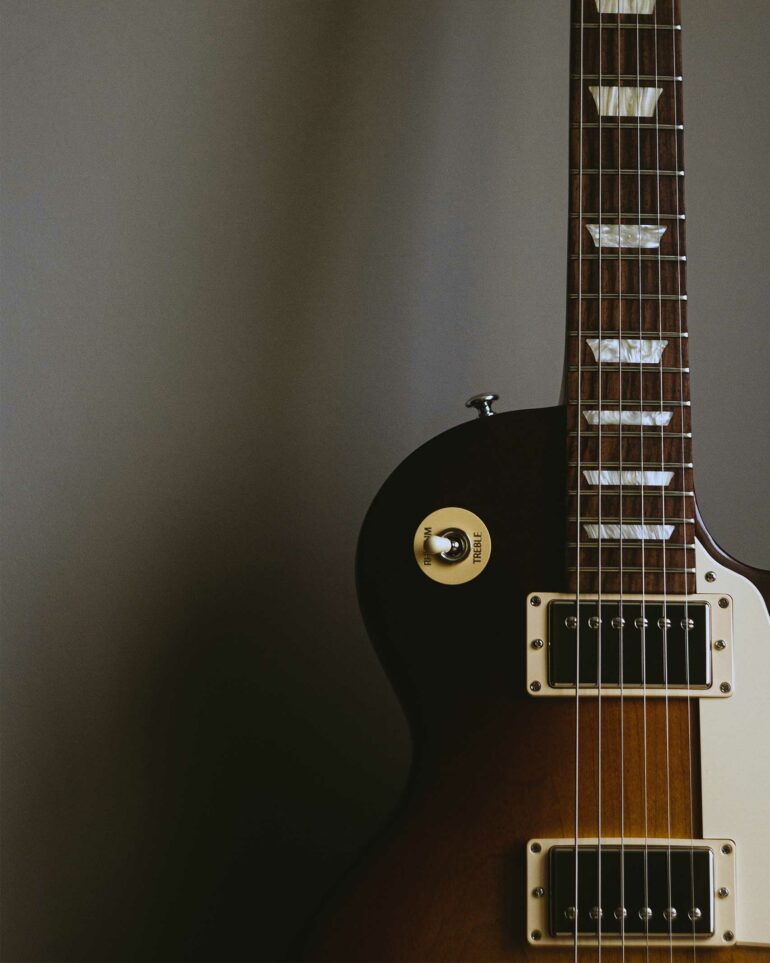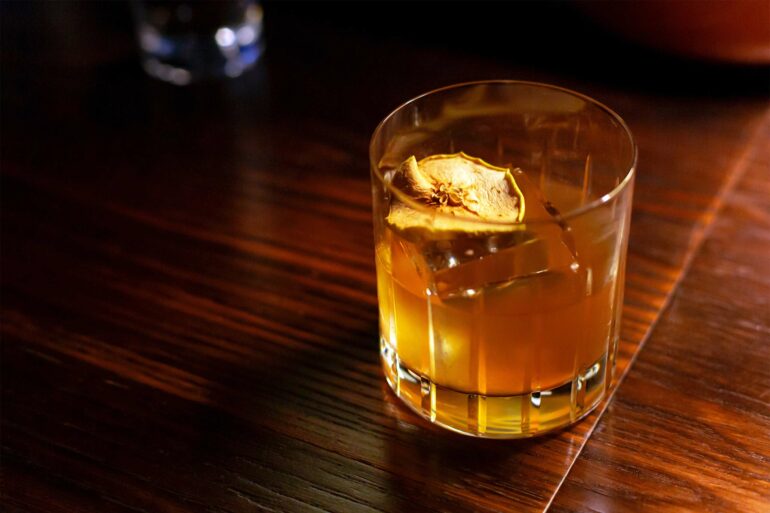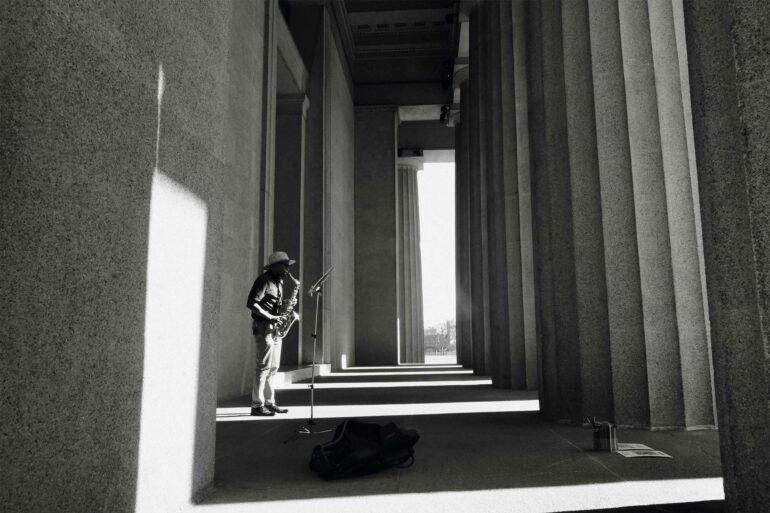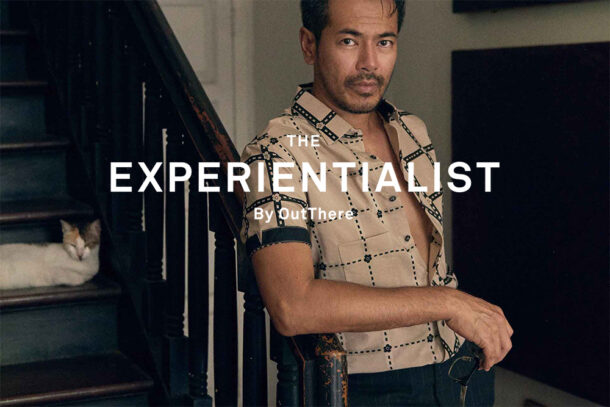On a deep dive into the Deep South, Lynn Houghton visits the capital of country music, Nashville, where the hospitality, pitch-perfect soul food and honky-tonk hopping all go down a treat.
‘I hit the interstate to Nashville and I made my noble stand, paying off some old karma with the Stacy Mitchhart Band. I’m a Music City blow-in, cause this is where I need to be. I’m one part psychedelic gypsy, three parts blue-eyed refugee.’ Ironically, it’s a Scottish band, The Waterboys, that is my soundtrack to the city. It blares out of the radio of my Uber into town.
“I moved from a small mountain town near Asheville, in North Carolina, to pursue my music career,” says Jason, my young driver. “But, to be honest, my favourite thing is living in a flat part of the world, where you can see storms coming for miles.”
He is probably referring to the silvery but dark charcoal clouds piling up on the eastern horizon, which surely indicate that rain – and a lot of it – is on the way. And, although Nashville and the city’s skyscrapers have grown exponentially over recent years, both in height and number, it is still relatively easy to see the sky.
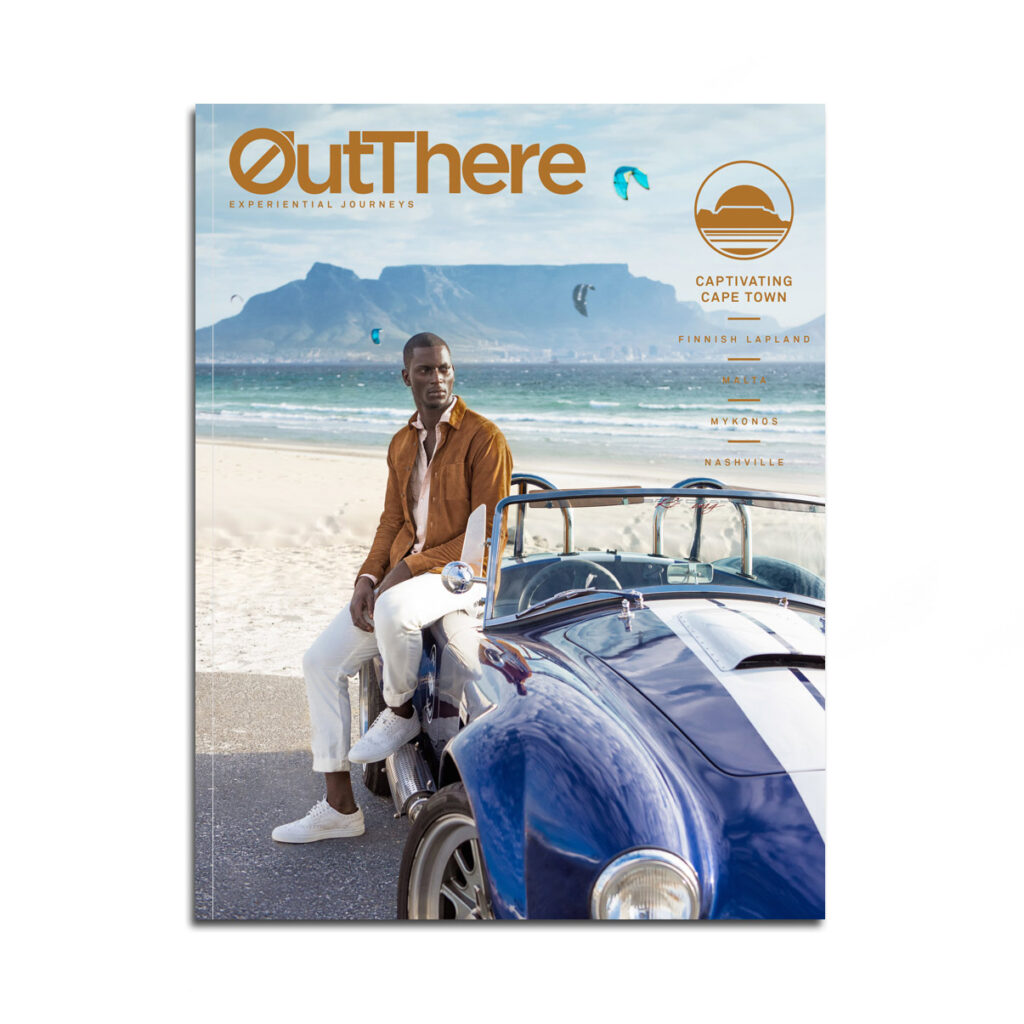
This story first appeared in The Captivating Cape Town Issue, available in print and digital.
Subscribe today or purchase a back copy via our online shop.
Or could he mean the changing ‘climate’ of this developing city? The state capital of Tennessee is expanding at a rate of knots, with much of upper Downtown starting to grow upwards as the nearby historic Honky Tonk district is protected from any significant change. I haven’t visited for several years and have already lost count of the new buildings. Along with the booming music business, the healthcare industry is also a big player here and, to keep up with the number of tourists, visitors and business travellers, enormous hotels have been popping up. Many are multi-storied buildings, like the 33-floor JW Marriott Nashville and the 35-floor Renaissance Nashville, both at the burgeoning upper end, but even the YMCA has begun work on a 66-storey residential tower over on Church Street.
Growth usually means diversification and I can’t help but notice that attitudes have become more liberal, in contrast with the rest of the state, since I was here a few years ago. I see lots of people in cowboy boots, but now it’s more a fashionista statement than for work purposes. There’s also an emerging LGBTQ+ community flexing its considerable muscle, and the populace is becoming more racially diverse than the rest of Tennessee, with the exception of Memphis.
Nashville’s Beginnings
My first glimpse of the Cumberland River, as it flows around the northern outskirts of the city, was from the top floor of the now-closed George Jones Museum, just off Honky Tonk Row. On a scorching hot day, the view went some way towards making me feel cooler, helped by fine mist sprinklers that douse those imbibing at the bar.
The river was what originally drew people to this part of the world. It would have been important to the Paleo-Americans over a period of thousands of years, providing fish, crustaceans and drinking water. By the 17th century, the river was critical for the early settlers and, only a century later, the early industrial revolution was cranking up a gear. Those in iron-working, leather-making and transport would have been the next wave exploiting this liquid resource.
The Cumberland River is a marvel at sunset, reflecting the colours of the vast sky above on its trembling surface. One of my favourite experiences is strolling over the John Seigenthaler Pedestrian Bridge at this time of day. The Cumberland connects with the Ohio River, which then flows fitfully into the Mississippi. The Mississippi River can be described as an enormous artery that carves through the middle of the US, starting at Lake Itasca, in Minnesota, and travelling 2,340 miles before ending at the Gulf of Mexico. It has always been an important communicator of goods, people, music and ideas. Jazz, for instance, travelled upriver to Chicago, having fermented in the brothels of New Orleans, while the Delta blues – one of the earliest-known styles of blues music – initially made its home in nearby Memphis before moving to the Windy City.
On a visit to Sun Studio in Memphis, I discovered that, in the mid-20th century, Delta artists such as BB King and Ike Turner had been signed by owner Sam Phillips, of Muscle Shoals fame. He also recorded Johnny Cash and rockabilly performers Carl Perkins and Buddy Holly. Some say that it was Elvis, influenced by the race music of Beale Street, but brought up on white popular ballads, that synthesised the two into rock and roll. But Presley himself never made such claims. In truth, it was probably Muddy Waters who was the father of rock and roll. He took the art of blues learned in the back country, brushed it with emotional overtones and musical exactitude, added the medium of electricity plus a solid beat, and laid the groundwork for a new style of music.
Muddy Waters, born in Issaquena County, Mississippi, was likely influenced by local guitarist Robert Johnson and later Big Bill Broonzy. Ole Man Stovall, who owned the plantation where Muddy lived with his grandmother, liked to hire local musicians for his shindigs and that included Muddy Waters. I visited the Delta Blues Museum in Clarksdale, where they have rescued and installed the actual cabin this influential artist grew up in. He ultimately went on to impact artists such as the Rolling Stones, Eric Clapton and many more.
For those who want to understand these musical connections, visit Nashville’s newly opened National Museum of African American Music, on Broadway. Using sophisticated interactive technology, it explains the influence of blues, spirituals, race music, rhythm and blues on current music, while also tracing its lineage. I defy anyone not to be inspired by this story and also the superb presentation. I could not drag myself away.
More music musings
As a youngster of about 13 years old, I sang with two sisters in an a-cappella gospel trio (soprano, second soprano and alto). We would gig around Southern California, singing at church services, but also occasionally performing at venues such as Knott’s Berry Farm. So, it was fascinating to learn that Nashville’s early music scene was dominated from the outset by white gospel, culminating with the printing of The Western Harmony, a hugely successful hymnal, in 1824. I imagine that Bill Gaither, who wrote much of the material our tiny group performed, would have been influenced by this collection of songs.
Not long after the release of The Western Harmony, the Ryman Auditorium (aka the Mother Church of Country Music) opened in the late 19th century and instantly drew huge audiences. In 1925, WSM radio station chose Ryman as the location for the Grand Ole Opry radio show and the programme still broadcasts to this day. For those who haven’t been to the Opry, now based in the suburbs, I would report that it is an odd mix of church (a pulpit graces the stage), rowdy radio programme and music gig. From the packed auditorium, it is easy to see there is an enormous fan base. The musicians on stage reflect the type of artists that would grace the Country Music Hall of Fame roster. It’s interesting to note that Ray Charles is the only African American artist ever nominated for that glittering list.
Speaking of the Country Music Hall of Fame and Museum, plan to spend at least 2–3 hours for a visit, as it has three floors of displays, memorabilia (the largest repository of country-music artifacts in the world) and a recording booth that visitors can use. The experience was illuminating, even though country and western music is not my cup of tea. Artists as diverse as Bob Dylan (a personal favourite), Roy Rogers, Ray Charles and Emmylou Harris are all featured. The museum even owns historic RCA Studio B, located in the Music Row district, where Elvis Presley, Waylon Jennings and Dolly Parton recorded chart-topping albums and singles.
But it is the neon-lit bars of Honky Tonk Highway (Broadway and 5th) that are magnetic for their sheer exuberance. It’s impossible to avoid one of these honky tonks on a visit downtown, even if just for a cooling drink. Venues such as Tootsie’s Orchid Lounge launched Loretta Lynn, Patsy Cline and Kris Kristofferson, and the strength of the district’s influence can’t be overstated, with the bars still doing a roaring trade every night of the year.
Other venues became launch pads for ‘guitar pickers’ and songwriters. Two examples are the Bluebird Cafe, which set up shop in 1982, and The Station Inn, which was opened in the early 1970s by a group of bluegrass musicians. I highly recommend the second venue, even though it looks a bit downtrodden from the outside. It’s possible to bump into celebrity artists there – I was sitting next to John Oates, of Hall & Oates fame, on my first visit. Plus, they serve up a mean pizza.
Over the past 20 years, alternative artists and music began moving into the Nashville performance mainstream. Black artists who had been studio players for many years and made names for themselves on the circuit were starting to come out from the shadows. Rappers now based in Nashville include Tim Gent and Reaux Marquez, while R.LUM.R moved from acoustic writing to being an R&B sensation. To catch up with some of the new up-and-coming African American musicians, with acts such as Yola Carter (originally from England), Adia Victoria (with her updated Southern sensibility) and The New Respects (blending Aretha’s soul with the Beatles’ song-writing skills) all storming up the charts, YouTube is your friend.
Gay bars and drag queens
Over on Church Street, halfway between The Gulch and Downtown, are two popular gay bars with DJs curating dance music and regular drag-queen shows. Tribe started life about 20 years ago and soon after Play opened next door. On my evening at Tribe, I found the bar staff and crowd welcoming and was thrilled to get a selfie with Princess. Both venues have gone from strength to strength, according to one of the owners, Joey Brown. He reports that there have been a fair few challenges along the way, particularly when dealing with the fallout from the pandemic, but both businesses have come out on the other side in rude health.
Play is famous for its phenomenally successful Suzy Wong’s Drag ’n Brunch on Friday, Saturday and Sunday. Alyssa Edwards, from RuPaul’s Drag Race, also performs at Play, as does Jade Jolie. I plan to check out Vivica Steele at Acme Feed & Seed, as well as some other venues on Church Street, such as Canvas, where mixed crowds gather for the artsy interior and live music. On the east side of Nashville, The Lipstick Lounge, at 1400 Woodland Street, bills itself as ‘A Bar for Humans’ and features dancing plus competitive karaoke (everyone’s a singer in Nashville, remember).
And, although it had to be cancelled in 2020 and was delayed in 2021, Nashville’s Pride Parade grows more prolific and more popular each year. Attendance for the two-day festival in 2019 was estimated at 75,000. Not bad considering that it wasn’t even inaugurated until 1988.
The Deep South may not be the first or most natural place one would think of when looking for an LGBTQ+ friendly or alternative destination. But I think Nashville is starting to break the mould with its youthful demographic, open-minded ethos and range of activities that appeal particularly to music lovers. This could be the time and place for me to dive into something a bit different… perhaps even have me a pair of those cowboy boots at the ready.
Photography by Natalie Cardona, Matthew Jungling, Cinescope Creative, Tim Mossholder, Yurii Stupan, Mark Pecar and Chad Morehead
Get out there
Do…
… get a seat early for the Nashville Pride Parade, held at the end of June. It’s one of the best in the South, with the exception of New Orleans.
… check out some live music at the City Winery. Stars like Patti LaBelle often appear at the Bridgestone Arena.
… support local LGBTQ+ innkeepers. The Germantown Inn is a bijou, 10-suite property within walking distance of the Bicentennial Capitol Mall State Park, a quiet area popular for its proximity to Downtown.
Don’t…
… forget to book a tour on the Big Drag Bus. Branded as “Lip Synchin’ and Day Drinkin’”, this is one of the best and most fun parties in town.
… miss the Grand Ole Opry if you are a true dyed-in-the-wool fan of country music. Rising talent, superstars and legends all appear on stage here.
… deny yourself the opportunity to acquire a pair of cowboy boots. If you fancy a made-to-measure pair, visit Music City Leather, while at Boot Country, you buy one pair and get two pairs free.
The inside track

Owner of gay venues Tribe and Play, Joey Brown has been in the business for 20 years and seen many positive changes for LGBTQ+ artists. He is passionate about inclusion and applauds the success of Suzy Wong’s Drag ’n Brunch, now a Nashville institution.
Eat
Shrimp’n grits is a traditional Southern dish and usually served with gravy. You’ll find it on the menu with Creole sauce at the Southern Steak & Oyster, in the popular SoBro district.
Drink
There are exceptional bars in restaurants here, such as the one at the newly opened Dutch. Try the Crooked Smile cocktail, made with bourbon, or a Strawberry Blonde, made with tequila and Aperol.
Shop
You might think Gibson Garage, with its revolving rack of guitars, interactive stage and every accessory imaginable, is for the musical elite, but everyone is welcome. Check out the acoustic room.


